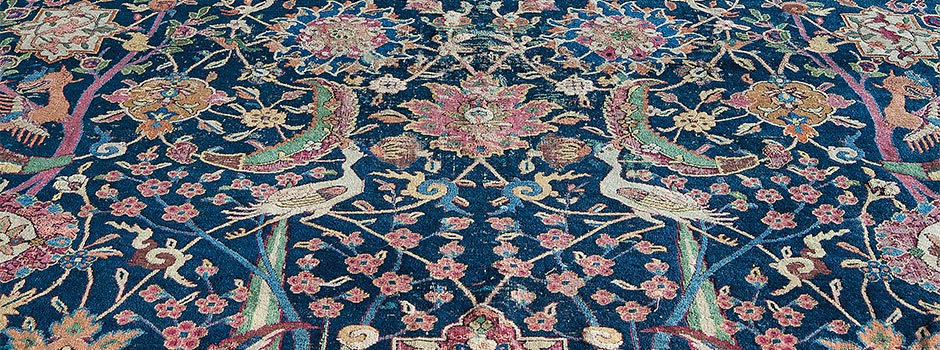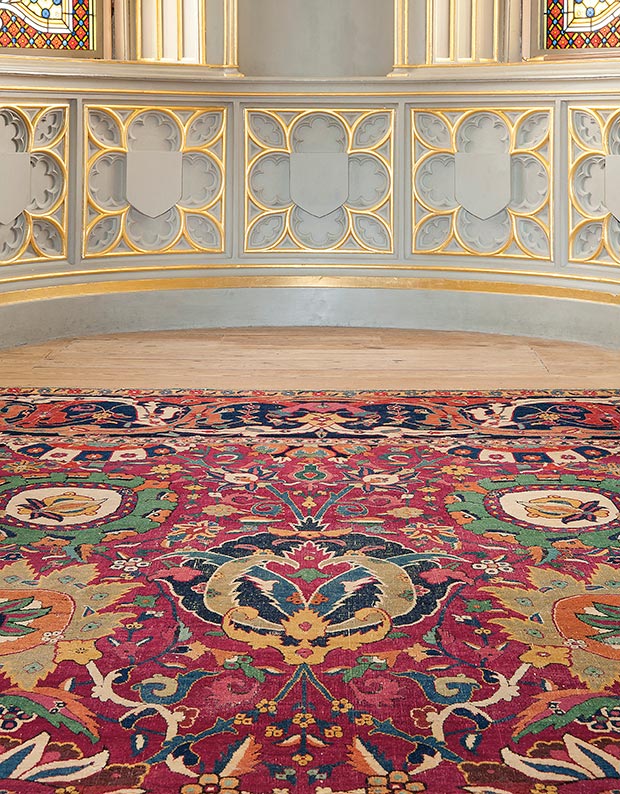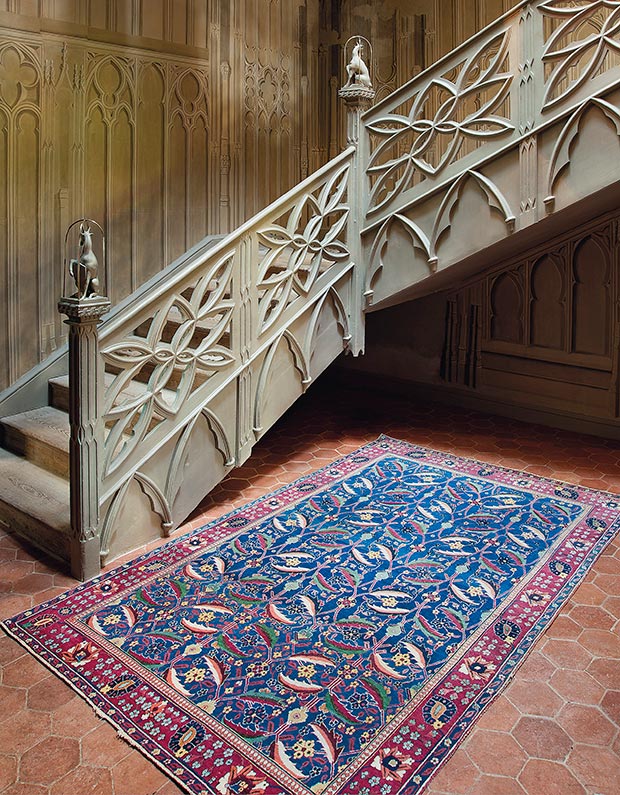
AUCTION AT CHRISTIE'S LONDON Unseen for a Century: ‘The Alice de Rothschild Vase Carpets’
Apr 13, 2016 Art Auction

Alice de Rothschild (1847-1922) was the eight and youngest child of Anselm and Charlotte von Rothschild, members of the prominent Rothschild banking family of Austria. Alice was extremely close to her brother Ferdinand, who was sent to England to study at Cambridge University. When he began the construction of Waddesdon Manor in Buckinghamshire, Alice acquired a nearby property to remain close to her brother.
Alice never married and Ferdinand became a widower early in his life, which drew them closer together in their passion for collecting. The Rothschilds were amongst the most prolific collectors in the field of Islamic Art and when the Orientalist interiors became fashionable in the third quarter of the 19th century, the family remained at the forefront of this emerging taste.
No documentation has survived when these three exceptional carpets joined the Rothschild collection but it is known that Ferdinand upon his death in 1898 bequeathed Waddesdon Manor and its content to Alice, who merged at this point her own collection kept at Eythrope with the one from her brother to form one unified collection. At her death in 1922 the entire collection and estate went to her nephew James Rothschild (1878-1957) and by decent the carpets remained close to the family.
 Lot 100: The Alice de Rothschild Kirman Vase Carpet / Courtesy of Christie's
Lot 100: The Alice de Rothschild Kirman Vase Carpet / Courtesy of Christie's
 Lot 102: A Kirman Vase Carpet fragment, South East Persia, late 16th Century, Estimate: £400,000-600,000 / Courtesy of Christie's
Lot 102: A Kirman Vase Carpet fragment, South East Persia, late 16th Century, Estimate: £400,000-600,000 / Courtesy of Christie's
Each of the three carpets are very different from the other in design and size and they provide a fascinating opportunity to view side by side the very best of Kirmani weaving, spanning a hundred years from the end of the 16th to the end of the 17th century.
The term Vase was first coined following an exhibition organized by May Beattie in 1976, which highlighted a group of carpets featuring stylized vases and which all shared a similar weaving technique. The term has since been used to signify all of these carpets woven in this manner and regardless their designs including vases or not, all are known as Vase carpets. The structure of Vase technique is very unusual in having three passes of wefts after each row of knots.
The top lot of the three Kirman Vase carpets is lot 101, a late 17th century South East Persian example (estimate: £1,000,000-1,500,000). It is the smallest in size but it is the only one of the three to have its complete filed and border and is undoubtedly in the best condition.
 Lot 101: A Kirman Vase Carpet South East Persia, late 17th Century, Estimate: Estimate: £1,000,000-1,500,0000 / Courtesy of Christie's
Lot 101: A Kirman Vase Carpet South East Persia, late 17th Century, Estimate: Estimate: £1,000,000-1,500,0000 / Courtesy of Christie's
"This carpet provides further evidence to support the theory that the wavers of Kirman in the 17th century were the most inventive and influential carpet designers in the history of the Persian carpet making. Its design is a wonderful synthesis and distillation of some of the earlier Vase designs into something that has the lightness of touch, and clarity of space formed through a profound understanding of the arrangement of colour," commented Louise Broadhurst, Christie’s Head of Oriental Rugs & Carpets department.
Comments
Add a comment